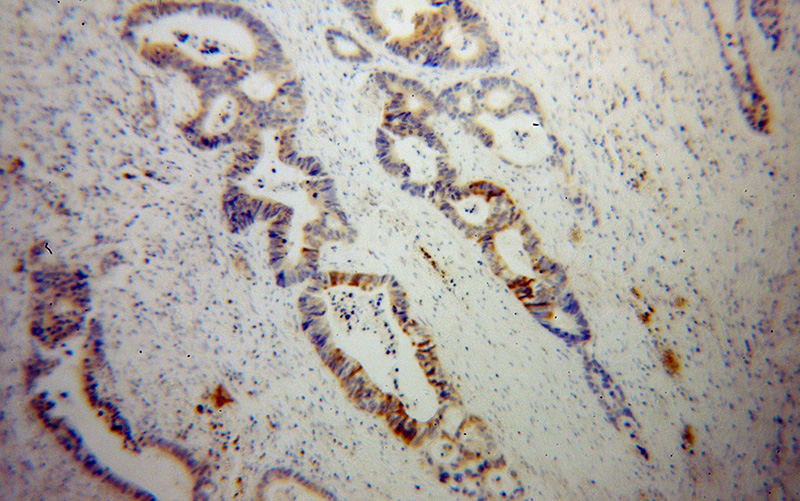-
Product Name
SCNN1G antibody
- Documents
-
Description
SCNN1G Rabbit Polyclonal antibody. Positive IHC detected in human colon cancer tissue. Positive WB detected in mouse lung tissue. Observed molecular weight by Western-blot: 70-85 kDa
-
Tested applications
ELISA, IHC, WB
-
Species reactivity
Human,Mouse,Rat; other species not tested.
-
Alternative names
ENaCg antibody; ENaCgamma antibody; Gamma ENaC antibody; Gamma NaCH antibody; PHA1 antibody; SCNEG antibody; SCNN1G antibody
-
Isotype
Rabbit IgG
-
Preparation
This antibody was obtained by immunization of SCNN1G recombinant protein (Accession Number: NM_001039). Purification method: Antigen affinity purified.
-
Clonality
Polyclonal
-
Formulation
PBS with 0.02% sodium azide and 50% glycerol pH 7.3.
-
Storage instructions
Store at -20℃. DO NOT ALIQUOT
-
Applications
Recommended Dilution:
WB: 1:500-1:5000
IHC: 1:20-1:200
-
Validations

mouse lung tissue were subjected to SDS PAGE followed by western blot with Catalog No:115011(SCNN1G antibody) at dilution of 1:1200

Immunohistochemical of paraffin-embedded human colon cancer using Catalog No:115011(SCNN1G antibody) at dilution of 1:100 (under 10x lens)
-
Background
SCNN1G (sodium channel, nonvoltage-gated 1, gamma), also known as ENaC gamma (epithelial Na(+) channel subunit gamma) or amiloride-sensitive sodium channel subunit gamma, is the gamma subunit of the epithelial Na(+) channel (ENaC). ENaC is expressed in the apical membrane of salt-absorbing epithelia of kidney, distal colon, and lung. ENaC is a non-voltage gated, constitutively active channel highly selective for sodium. It has an essential role in salt and fluid homeostasis across epithelial tissues. Mutations in the gene of SCNN1G have been associated with Liddle syndrome. Native SCNN1G has a calculated molecular weight of 74 kDa and maybe undergo post-transcriptional modifications, including glycosylation and proteolytic cleavage (PMID: 12871941; 18086683).
-
References
- Wang S, He G, Yang Y. Reduced expression of Enac in Placenta tissues of patients with severe preeclampsia is related to compromised trophoblastic cell migration and invasion during pregnancy. PloS one. 8(8):e72153. 2013.
Related Products / Services
Please note: All products are "FOR RESEARCH USE ONLY AND ARE NOT INTENDED FOR DIAGNOSTIC OR THERAPEUTIC USE"
